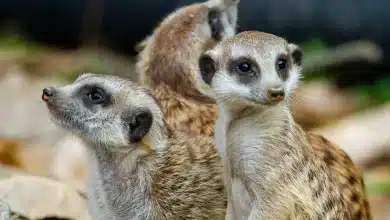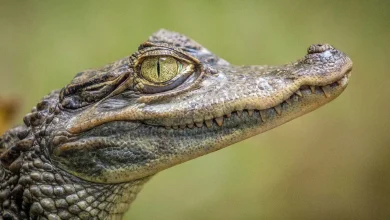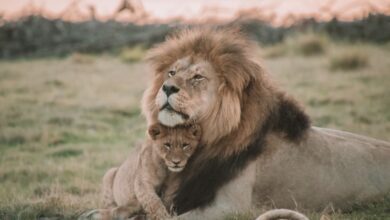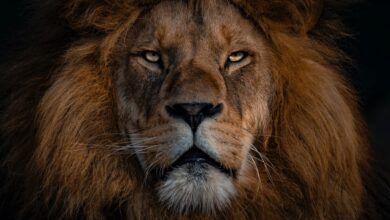How Kangaroos Reproduce?
Have you ever seen a joey peeking out of its mother’s pouch? This is a truly amazing sight, and you might wonder: Just how does a baby Kangaroo get born? The reproductive journey of the kangaroo from mating to birth is unlike any other animal in the world.
This guide will explore the fascinating story of how kangaroos reproduce, including how females delay giving birth until the perfect conditions, and how a joey is born. You’re about to discover the fascinating story of kangaroo breeding, whether you’re a nature lover or simply curious.

How Do Kangaroos Mate?
Male kangaroos have to earn their right to mate. It is not easy to get access to females. You fight for it. Male kangaroos fight fiercely to establish dominance in the group. Only the strongest, most dominant males are allowed to mate.
How Kangaroos Fight for Mates?
Kangaroos have a fighting style that goes beyond self-defence. The “boxing match” is a vital part of the social structure and mating systems. Male kangaroos use their powerful legs and forelimbs as kicks and punches to knock off their opponents. These fights are used to determine the pecking orders, with dominant males having exclusive access to females who are receptive. Polygyny, where one male mates with multiple females, is common among wallaroos and kangaroos.
Kangaroo Gestation Period
Kangaroos are fascinating creatures. The nocturnal animals are active at night and calm during the daylight hours. Kangaroos are known for their powerful hind legs. They can jump great distances and hop. The pouch is one of the most distinguishing features. It is used by kangaroos to protect and carry their young. Kangaroos are unique among animals in that they have a different birth and development process.
Kangaroos move bipedally, which means they use their two hind legs to jump and run. The kangaroo can jump up to 70 km/h and is one of the fastest animals on earth. Understanding their birthing process is largely due to the enclosed pouch and unique reproductive system.
Kangaroos can raise to three baby kangaroos at once, each of which is of a different age: one inside the uterus and one in the pouch. The timing of reproductive activity varies according to species.
-
Red Kangaroos breed mainly during the rainy seasons, which ensures food for the young when they become independent.
-
Western grey and Eastern grey kangaroos breed all year round, but the peak is usually in the summer. By spring, the young kangaroos will be more independent.
The courtship and mating process is usually short, but it’s not without competition. Male kangaroos fight each other, often using their front legs in a boxing-like manner, to win the right to mate. During the breeding season, only the strongest and dominant males can mate with more than one female.

How Do Kangaroos Give Birth?
Kangaroos have a gestation period that is one of the shortest among mammals. It ranges from 28 days to. The baby kangaroo, also known as a joey, is born with a very underdeveloped body, measuring just 2 centimetres. It has closed eyes, barely formed ears and is completely hairless.
The newborn joey crawls instinctively from the mother’s birth tube into her pouch, despite its fragile size. It latches on to eat and grows in safety for several months. It’s interesting to note that kangaroos, which are marsupials and not placental mammals, also give birth via the vagina. The actual delivery is quick, but it’s the development of the joey that takes place after birth, in the pouch.
What happens after Baby Kangroos is born?
The tiny, underdeveloped joey starts an amazing journey immediately after birth. It crawls through the mother’s hair to reach its pouch using its well-formed forelimbs. The mother will lick a trail from her cloaca up to her nipples to guide her newborn. The joey latches tightly onto the nipple, and the nipple expands in the mouth of the joey, which anchors it. The joey will remain latched for several months as it is fed a steady supply of milk that contains immunity and is designed specifically for newborns. During this period, the joey’s jaw and other parts of its body continue to develop until it is strong and able to suckle and unlatch on its own.
Kangaroo mothers can produce multiple types of milk at the same time. Her body adjusts the milk’s composition, starting with a colostrum-like formula for newborns, then shifting to high-protein, high-carb blends for growing joeys, and finally to fat-rich milk for those nearing independence. Kangaroos can take care of multiple joeys simultaneously, and each one is at a different developmental stage. They provide tailored nutrition via separate nipples. The younger joey may still be in the pouch, while its older sibling continues nursing from outside. This can happen until two years old. The mother can continuously feed multiple offspring by using this unique reproductive system.

Courtship in Kangaroos
Kangaroos exhibit relatively simple courtship behaviours compared to those of other species. Males usually approach females to sniff their cloacal region to determine sexual receptivity. The male will then perform the flehmen, a vigorous sniffing response. The interaction will end without aggression if the female does not want to mate. Kangaroos have no fixed breeding season, and females can be spread out. Males are forced to search continuously for receptive mates. Females can expand their range to attract the attention of larger males during oestrus.
Copulation and Behaviour Leading Up to It
Male kangaroos are more persistent as oestrus approaches, following and stroking the female’s tail. As part of courtship, they may make a soft clucking sound. The entire mating sequence involves sniffing, following and tail-grasping. Eventually, the male will copulate with the female after staying near her for hours or days. Although other males are present, the dominant and largest male is typically the one who mates. The mating process is short, lasting only 10-15 minutes and repeated infrequently. While red kangaroos may seem to be mating casually, they are often accompanied by aggressive males.
Male dominance and reproductive strategies
Due to the high energy requirements of constant mating and the reduced feeding time, dominant male kangaroos (especially eastern greys) maintain breeding rights for a relatively short period–usually less than a year. Poor conditions can lead to rapid body loss or death. In euros, however, dominant males can temporarily withdraw from their breeding duties during dry seasons. Some, such as the male studied, return to dominance following “breaks” from breeding in fertile areas. This may be due to the flexible reproduction cycles of euros, where females stop reproducing sooner than reds in harsh conditions. The large males will likely leave to conserve their energy. Less successful males may continue to breed with the hope of a successful offspring.




